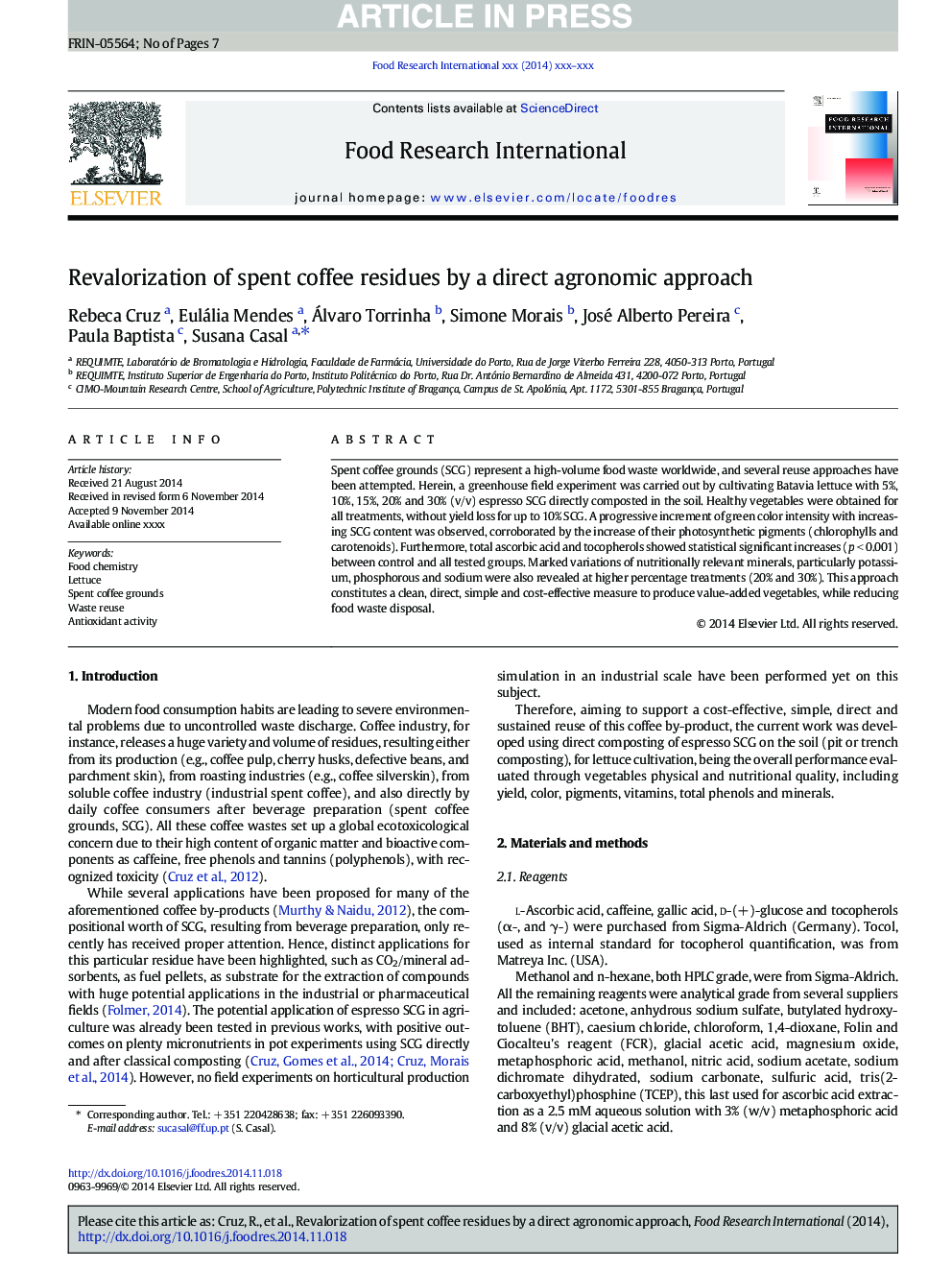| Article ID | Journal | Published Year | Pages | File Type |
|---|---|---|---|---|
| 6395469 | Food Research International | 2015 | 7 Pages |
Abstract
Spent coffee grounds (SCG) represent a high-volume food waste worldwide, and several reuse approaches have been attempted. Herein, a greenhouse field experiment was carried out by cultivating Batavia lettuce with 5%, 10%, 15%, 20% and 30% (v/v) espresso SCG directly composted in the soil. Healthy vegetables were obtained for all treatments, without yield loss for up to 10% SCG. A progressive increment of green color intensity with increasing SCG content was observed, corroborated by the increase of their photosynthetic pigments (chlorophylls and carotenoids). Furthermore, total ascorbic acid and tocopherols showed statistical significant increases (p < 0.001) between control and all tested groups. Marked variations of nutritionally relevant minerals, particularly potassium, phosphorous and sodium were also revealed at higher percentage treatments (20% and 30%). This approach constitutes a clean, direct, simple and cost-effective measure to produce value-added vegetables, while reducing food waste disposal.
Related Topics
Life Sciences
Agricultural and Biological Sciences
Food Science
Authors
Rebeca Cruz, Eulália Mendes, Álvaro Torrinha, Simone Morais, José Alberto Pereira, Paula Baptista, Susana Casal,
